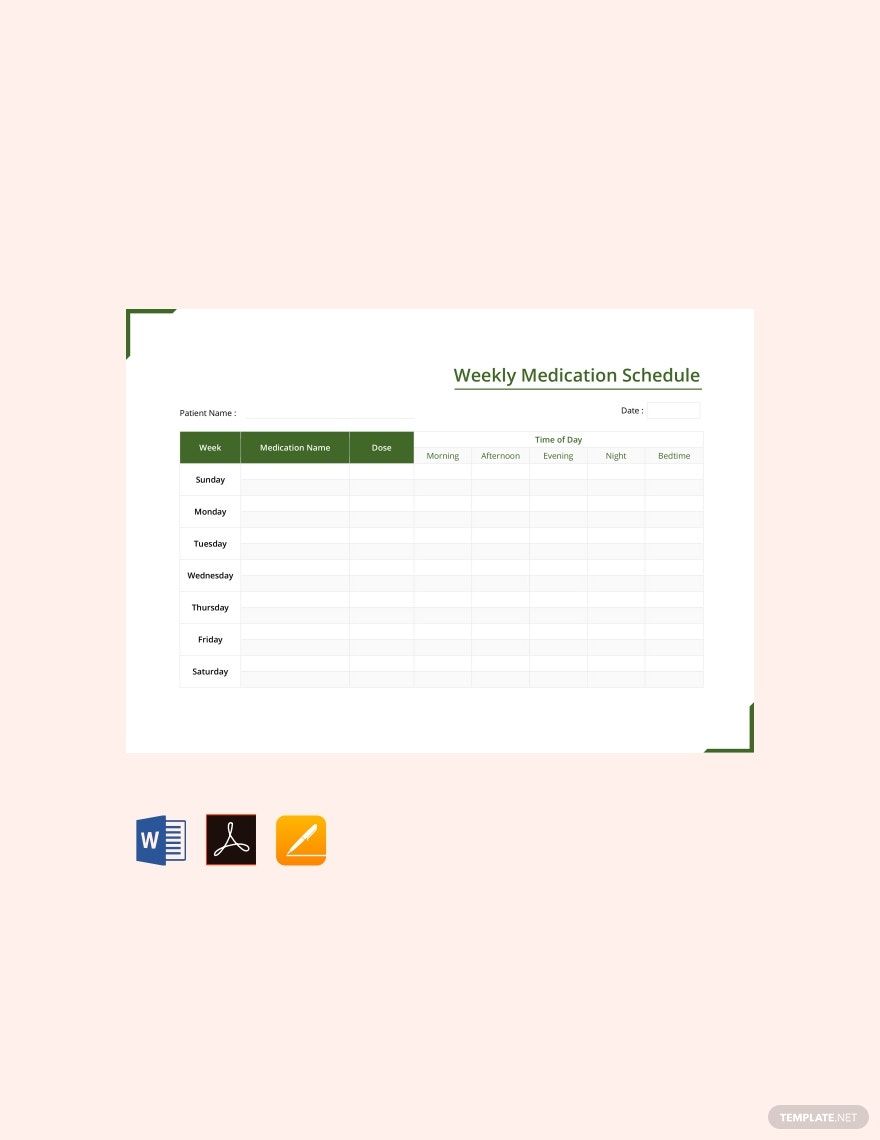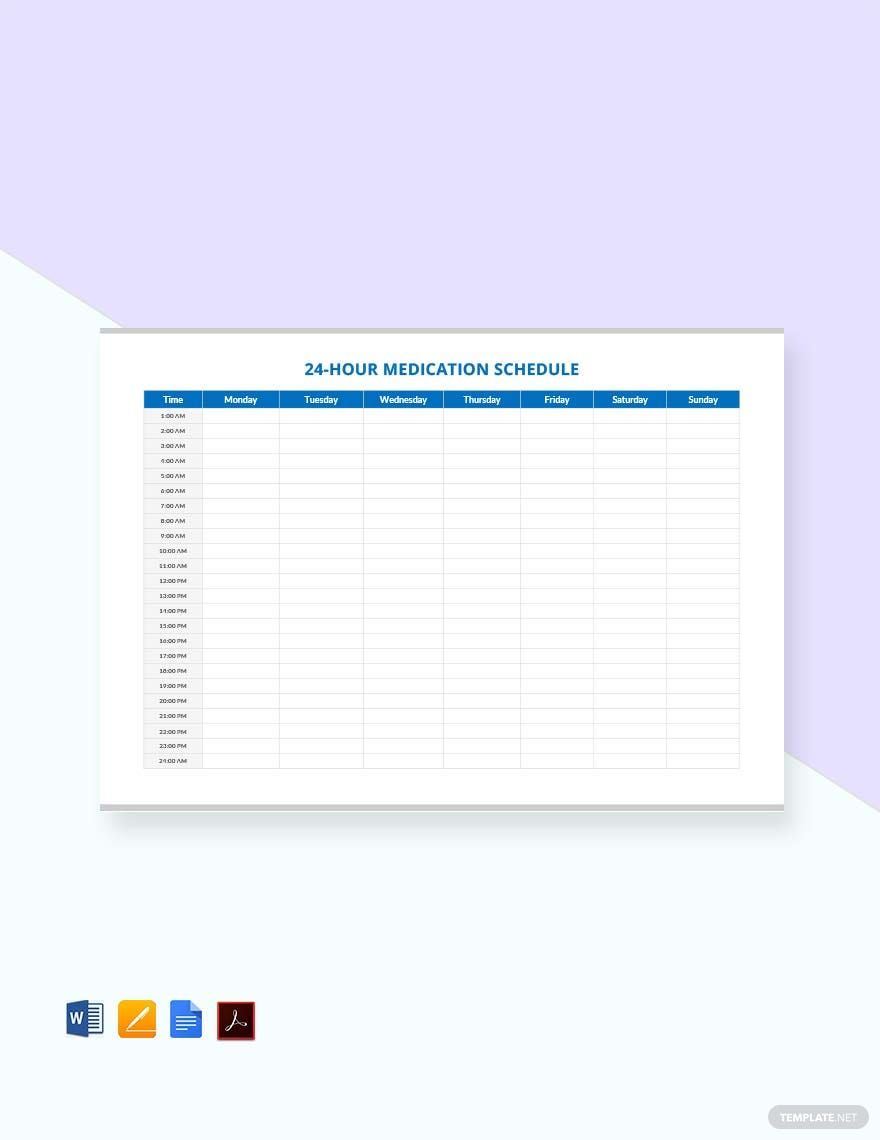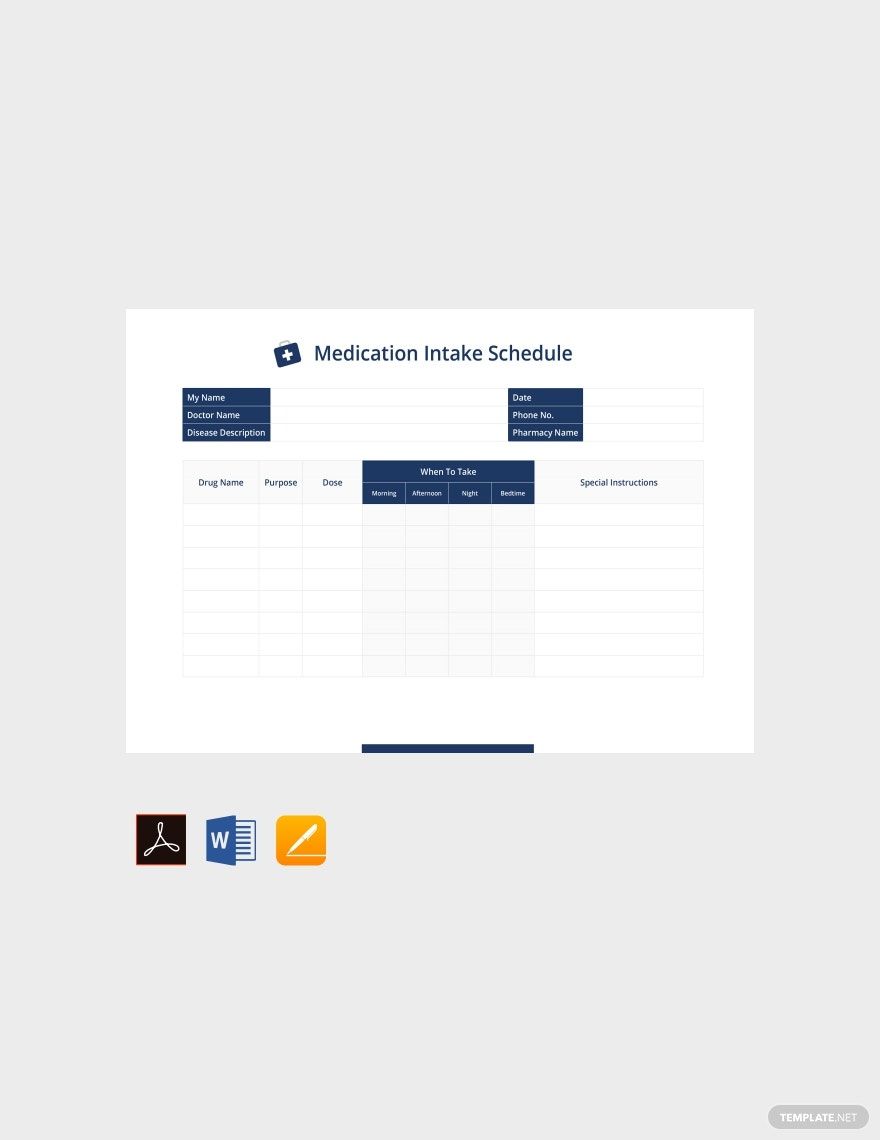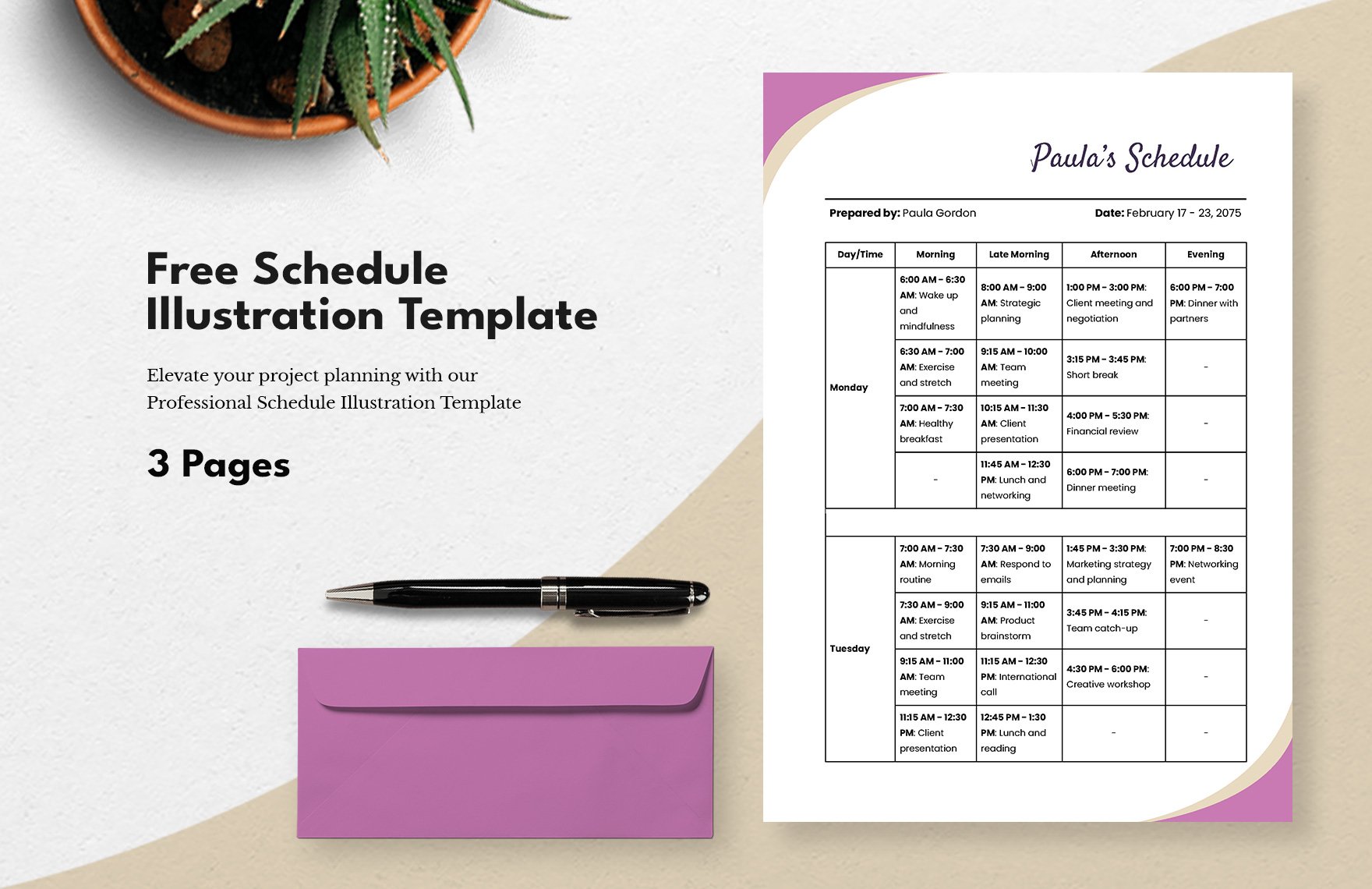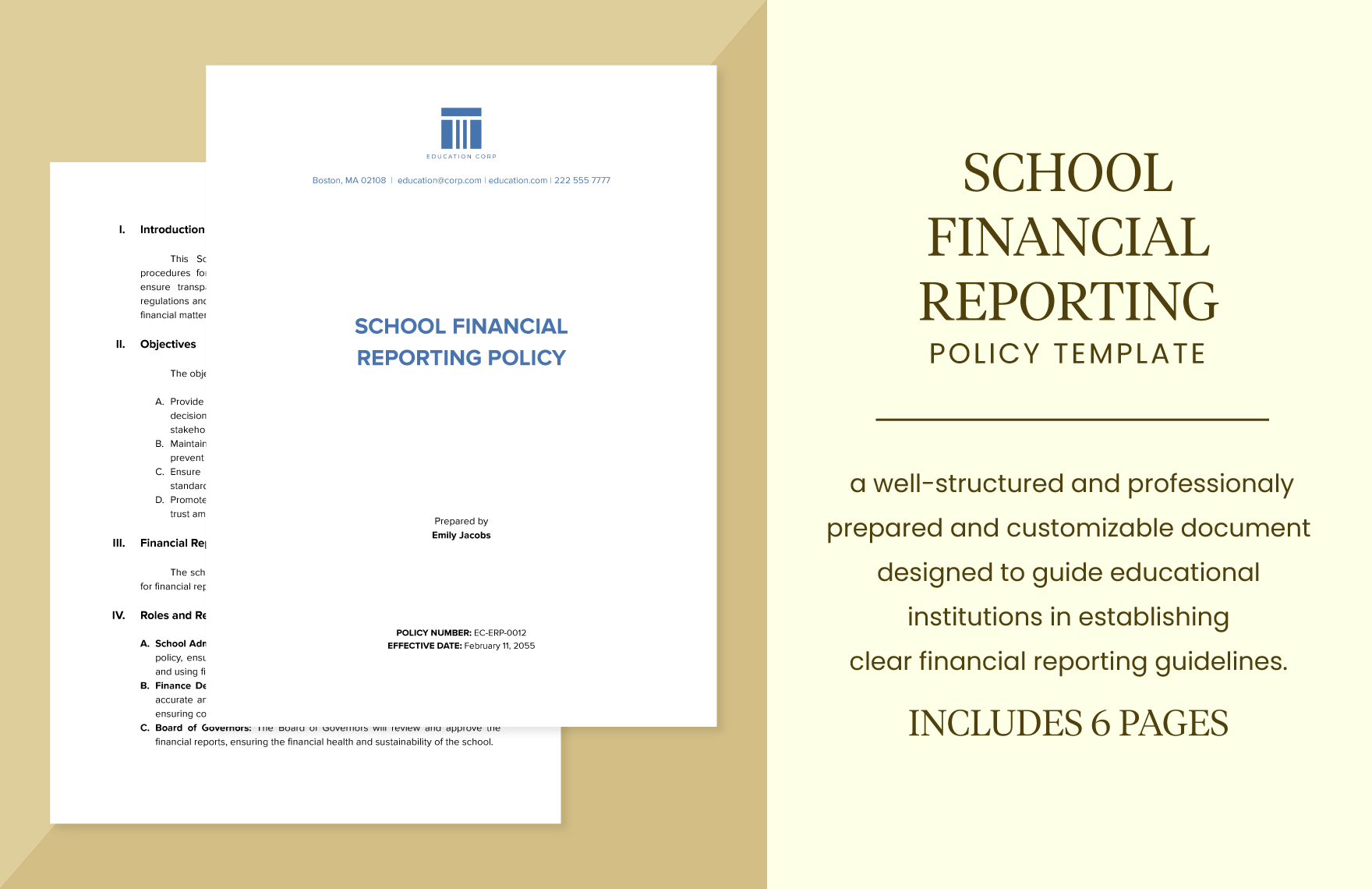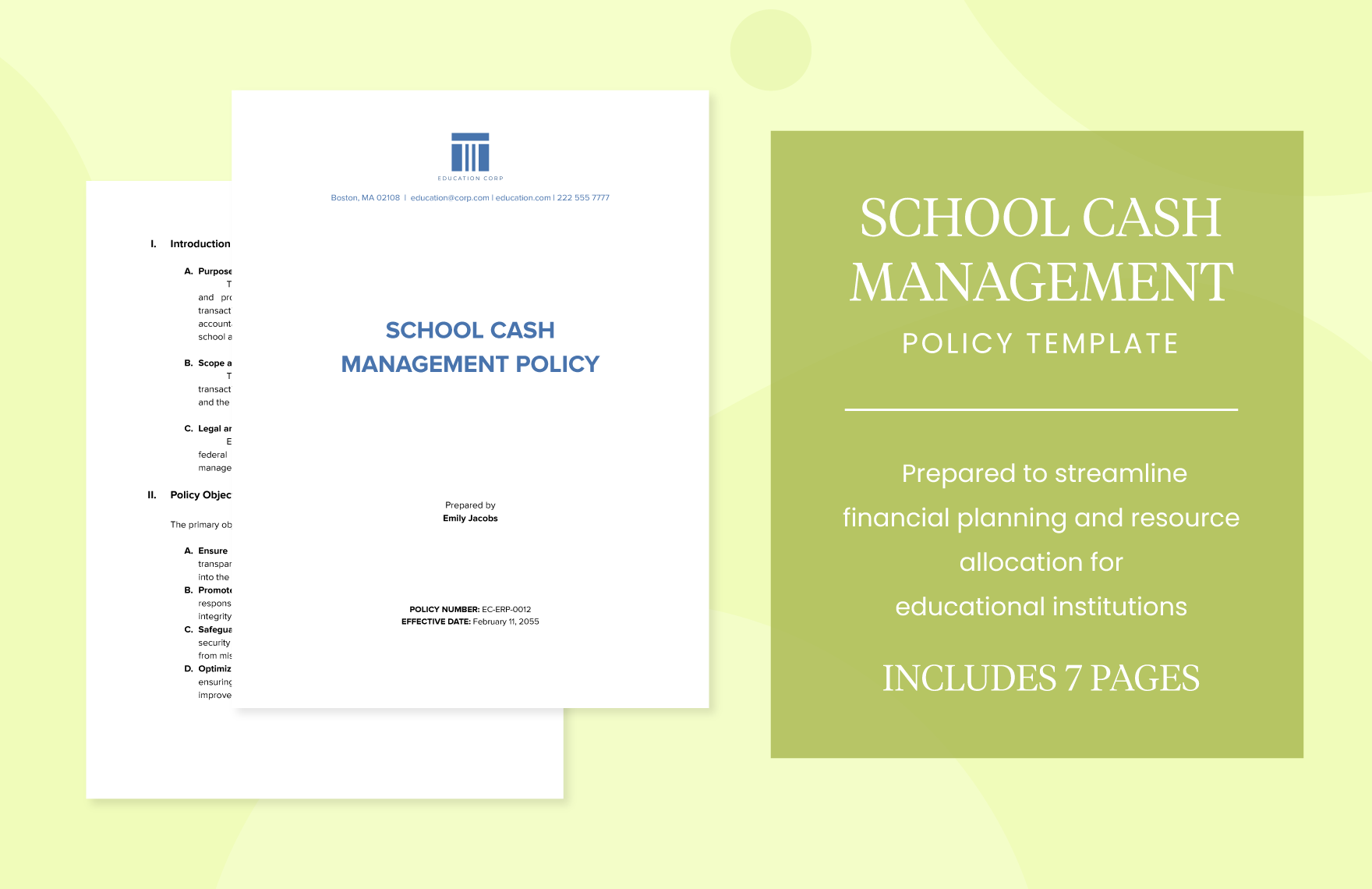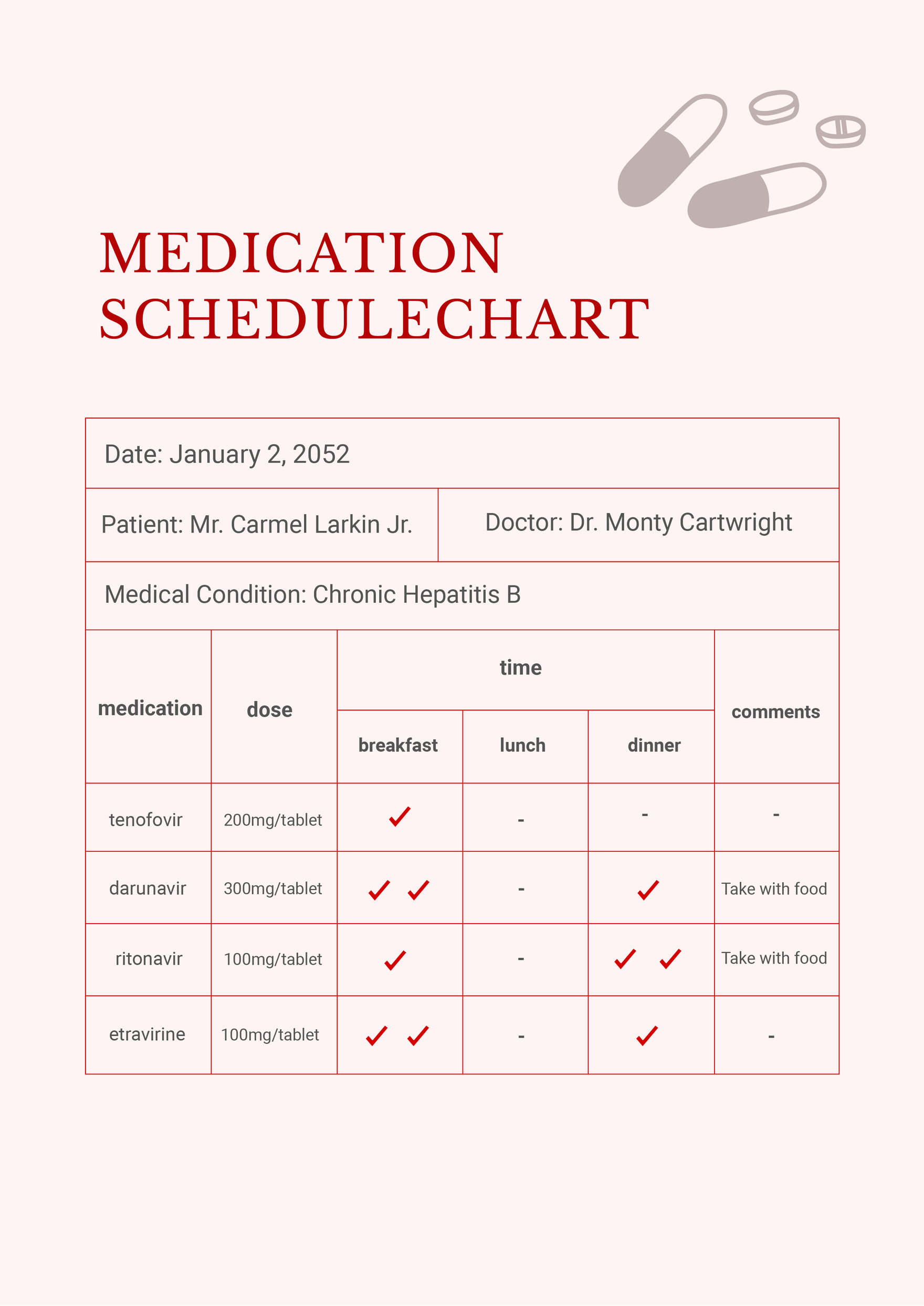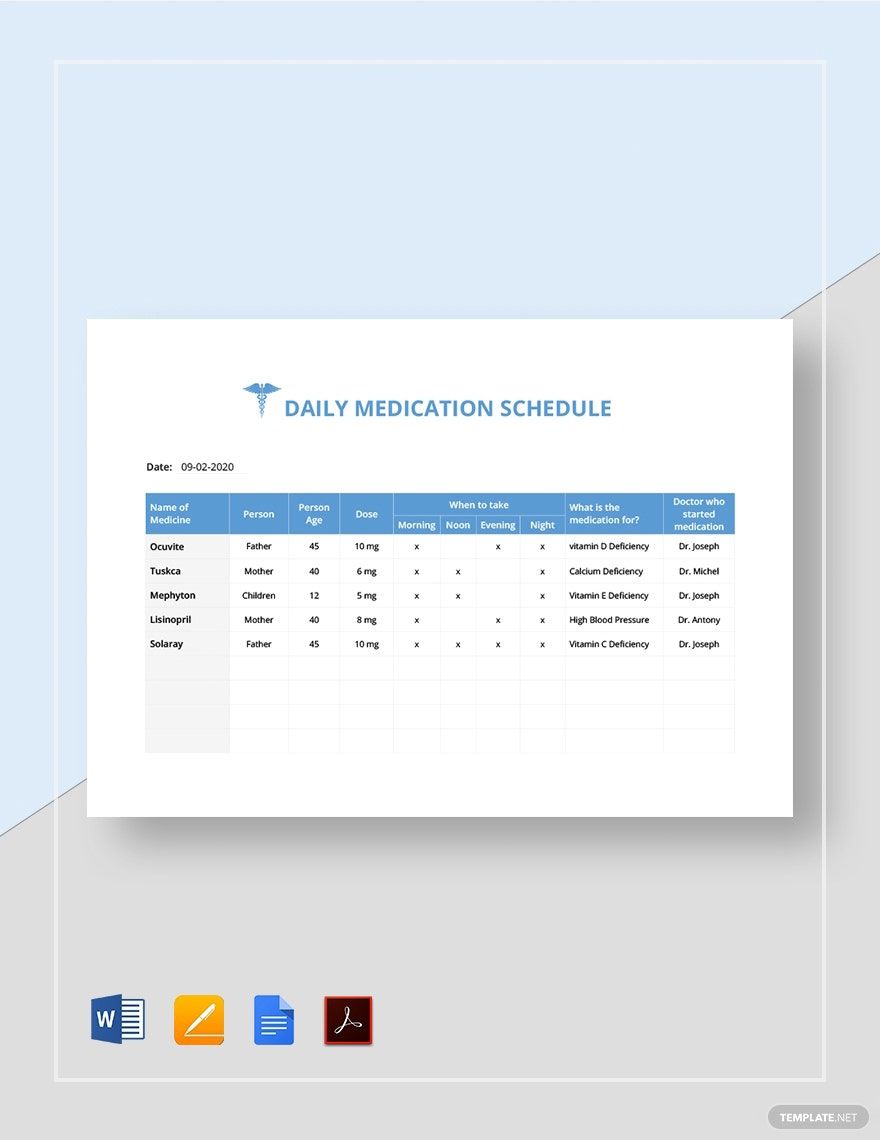There’s a reason why medical professionals need to be meticulous in their job. When handling and giving medications, everything should be logged to protect the healthcare provider in case something happens to the patient. Here, we have a selection of Medication Schedule Templates in PDF. These ready-made products are not only easily downloadable, but they’re also 100% customizable and fully printable. Apart from having a medication list, this ensures that all medications are given to the patient at the right time. Learn to be more meticulous by subscribing to our schedule templates today!
Medication Schedule Template in PDF
Make Sure to Take or Administer a Pill on Schedule When You Use Our Free Medication Schedule Templates Available at Template.net in PDF Format. Use Them Together With Your Daily Personal Medication List, Pet Medication Log, Monthly Medication Schedule, Patient Medication Schedule, or Patient Medication Checklist, to Be More Organized.
- Startup Funding Proposal
- Diploma Certificates
- Driver Cover Letter
- Menu
- Admission Letter
- Flyers
- Offer Letters
- Experience Letter
- Notes
- Job Application Letter
- Forms
- Schedule
- Notebook Journals
- Timetable
- Simple ID Cards
- Apperciation Certificates
- Visa Invitation Letter
- Checklists
- Letters
- Itinerary
- Vouchers
- Inventory
- Contracts
- Project Plan
- Training Certificates
- Editable ID Cards
- School ID Cards
- Organizational Charts
- Student Certificates
- Advertising Agency Proposal
- Renewal Letter
- Contruction Organization Chart
- Cash Vouchers
- Memo PDF
- School Certificates
- Baby Shower Invitation
- Employee ID Card
- List
- Makeup Artist
- Event Tickets
- Social Media Marketing Plan
- Work Reports
- Real Estate Proposal
- Estimate Sheet
- Invoices
- Hospital Letterhead
- Maintenance Schedule
- Authorization Letter
- Cards
- Timesheet
- Cleaning Schedule
- Aesthetic
- Vehicle quotation
- informal letter
- Cleaner cover letter
- Cleaning services proposal
- Query letter
- Photography proposal
- Advocate letterhead
- Internship letter
- Business development plan
- School letterhead
- Seo proposal
- Volunteer letter
- Receipts
- Daily Report
- Balance sheet
- Certificates sports
- Construction quotation
- Internship certificate
- Graphic design proposal
- Sports sponsorship letter
- Website templates
- Internship acceptance letter
- Music proposal
- Promotion letters
- Catholic funeral
- Report letter
- Cashier cover letter
- Waiver letter
- Safety certificate
- Manufacturing organizational chart
- Electrician cover letter
- Security report
- Membership Certificates
- Reminder Letters
- Sports proposal
- Two weeks notice letter
- Participation Certificates
- Freelancer agreement
- Production flowchart
- Annual Reports
- Anniversary card
- Experience Certificates
- Interior designer
- Housekeeping cover letter
- Freelancer proposal
- Chef cover letter
- Sign In Sheet
- Delivery plan
- Membership Cards
- Save the Date Invitations
- Business certificate
- Employee training plan
- Movie ticket
- Music contract
- Annual plan
- Doctor letterhead
- It and software proposal
- Payment voucher
- Safety officer cover letter
- Grade sheet
- Event quotation
- Private school organizational chart
- Meeting minutes
- Operational plan
- Management Reports
- Travel agency proposal
- Coaching plan
- Sheet
- Product plan
- Sales invoice
- Information letter
- Project management proposal
- Ecommerce flowchart
How to Create a Medication Schedule in PDF
According to Hopkins Medicine, medical errors represent 10% of US deaths. One of the most common forms of medical error is medication administration errors, which include wrong timing. This is why using medication schedules is important, and we have laid out guidelines below to help you make one in the PDF format.
1. Understand Your Institution’s Policies on Medications
Before you begin creating a medication schedule, understand first your institution’s policies about medication management. Always comply with the policies to prevent an uncoordinated rendering of services among medical professionals. If you want, you can always collaborate with nurses, physicians, pharmacists, and representatives from the administration.
2. Match the Format of Other Chart Documents
While this is not as important as the one mentioned above, it’s a plus if your schedule’s theme is similar to other chart forms. This creates consistency in the layout of all documents in the chart. Do this for the header contents, margins, and the spaces in between elements.
3. Put Labels on the Row and Column Headers
Speaking of headers, don’t forget to put labels or titles to signify the purpose of the columns and rows. Indicate where to write the medication’s generic and brand names, ordering doctor, frequency, time, and special instructions. Also, make sure these labels are legibly written.
4. Provide Enough Space for the Medication Details
As much as possible, provide a big enough space for all the essential details. This is especially important for the fields intended for writing special instructions when taking specific medications. And if needed, try narrowing down other columns to keep your document from looking cramped.
5. Use Any Software Application that Suits You
Regardless if you’re using Excel, Numbers, or any spreadsheet renderer, you can always export it to PDF in the end. So, use whatever software application works for you. You can even use document renderers such as Word and just import a table for the content. Again, use whichever suits you best.
Frequently Asked Questions
What is a medication schedule?
A medication schedule is a document for keeping track of when to take specific medications. Aside from the instructions on when to take the medications, this document also specifies the dosage, route, and contraindications.
How important is scheduling in general?
- Scheduling helps to keep you on track in your activities.
- Scheduling ensures that you finish your tasks on time.
- Scheduling enables you to prioritize tasks.
Why is it important to create medication schedules?
- Using one will help remind you to take or give medications at the prescribed time.
- Medication schedules will prevent the risk of creating drug-to-drug interactions.
- These ensure that there’s proper spacing in between dosages to allow the medication to be fully absorbed by the body.
What are the different medication frequencies?
- Stat (given right away).
- Once a day.
- Twice a day.
- Three times a day.
- Four times a day.
- PRN (only given when needed).
- Round the clock (given all day and night at four-hour intervals)
Aside from the right schedule, what are the other rights of medication administration?
- Right patient.
- Right medication.
- Right route.
- Right dosage.

